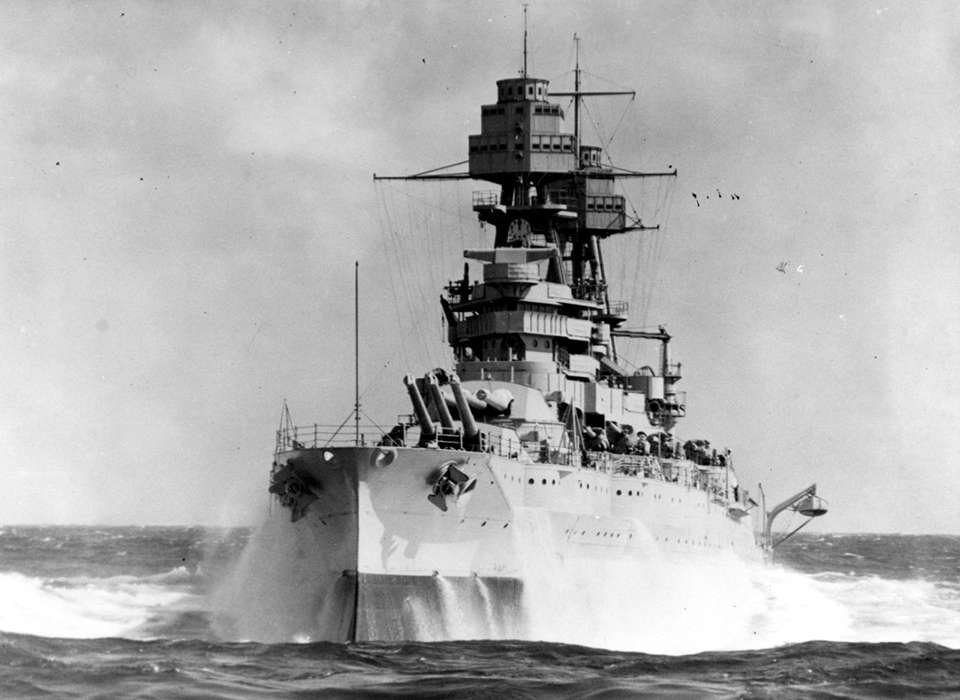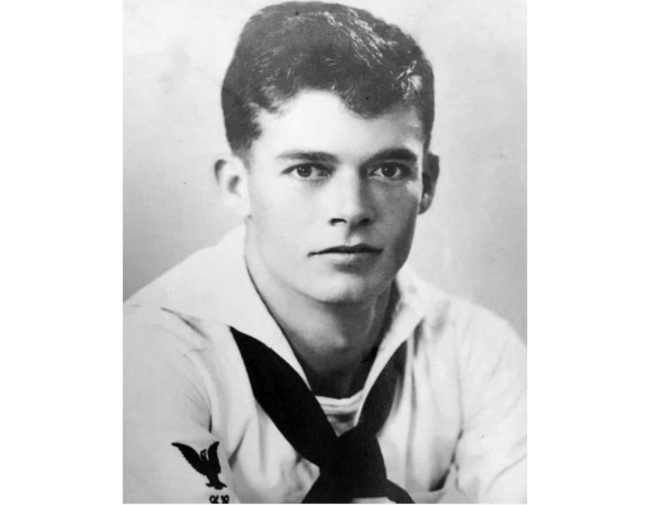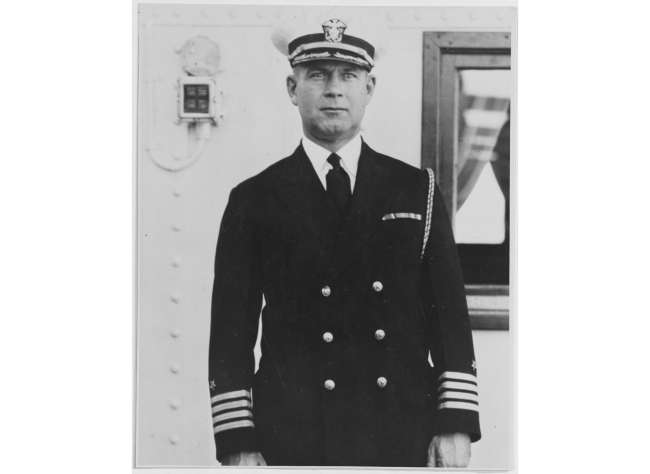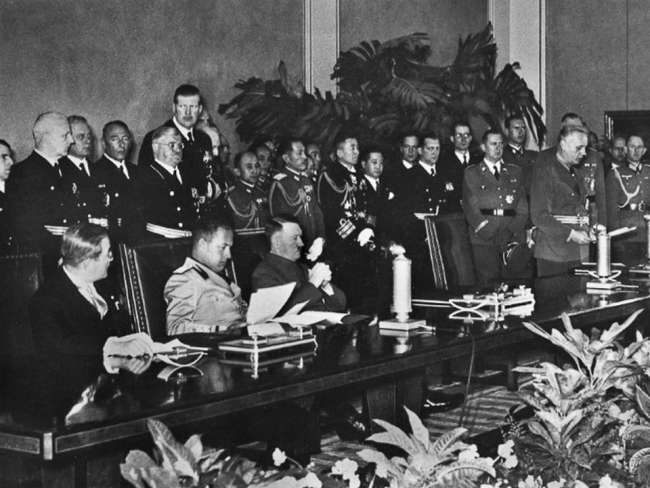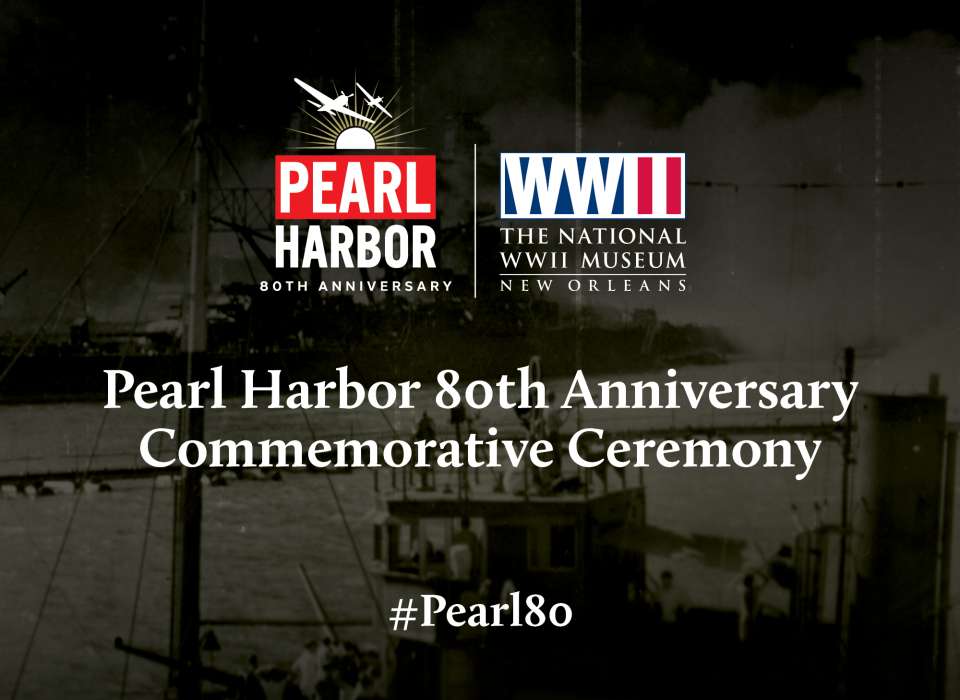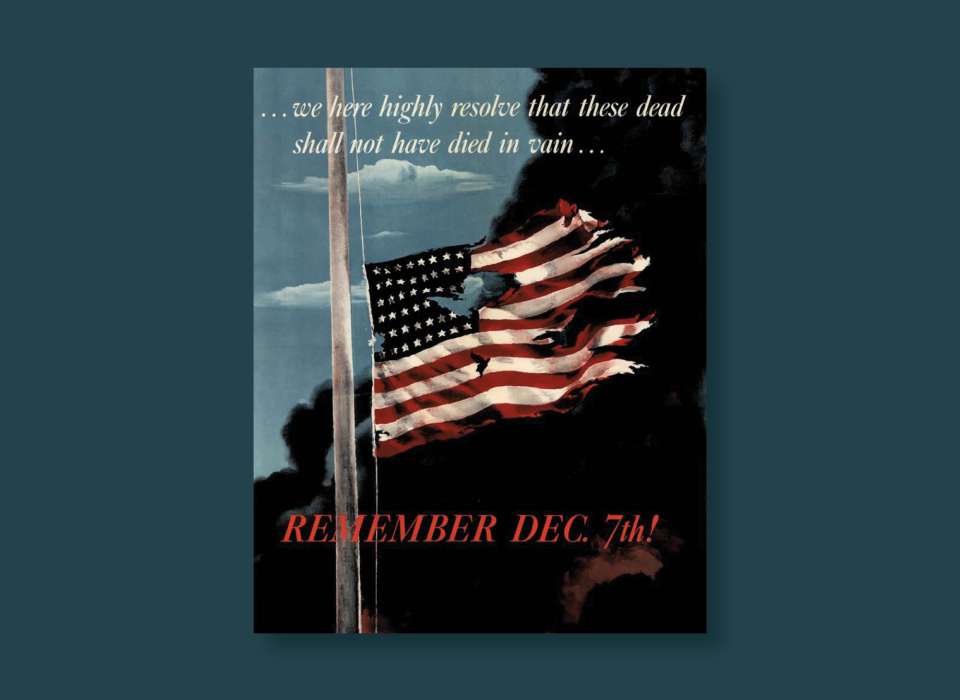Top Image: The USS Arizona (BB-39) photographed in high seas in the 1930s. Courtesy of the National Archives.
Famously, the battleship USS Arizona (BB-39) was only in combat for minutes before a Japanese armor-piercing bomb struck the ship’s forward magazine, causing an explosion that devastated the “super-dreadnought” and killed 1,177 officers and crewmen. The hulk of the vessel, battered and burned, became a symbol of the December 7, 1941 attack on Pearl Harbor.
While other warships at Pearl Harbor were recovered and refitted, the Navy quickly abandoned the idea of reviving the Arizona in its entirety. But crews worked on the wreck for months, removing equipment, cutting away mangled metal, searching for bodies, and reclaiming weaponry.
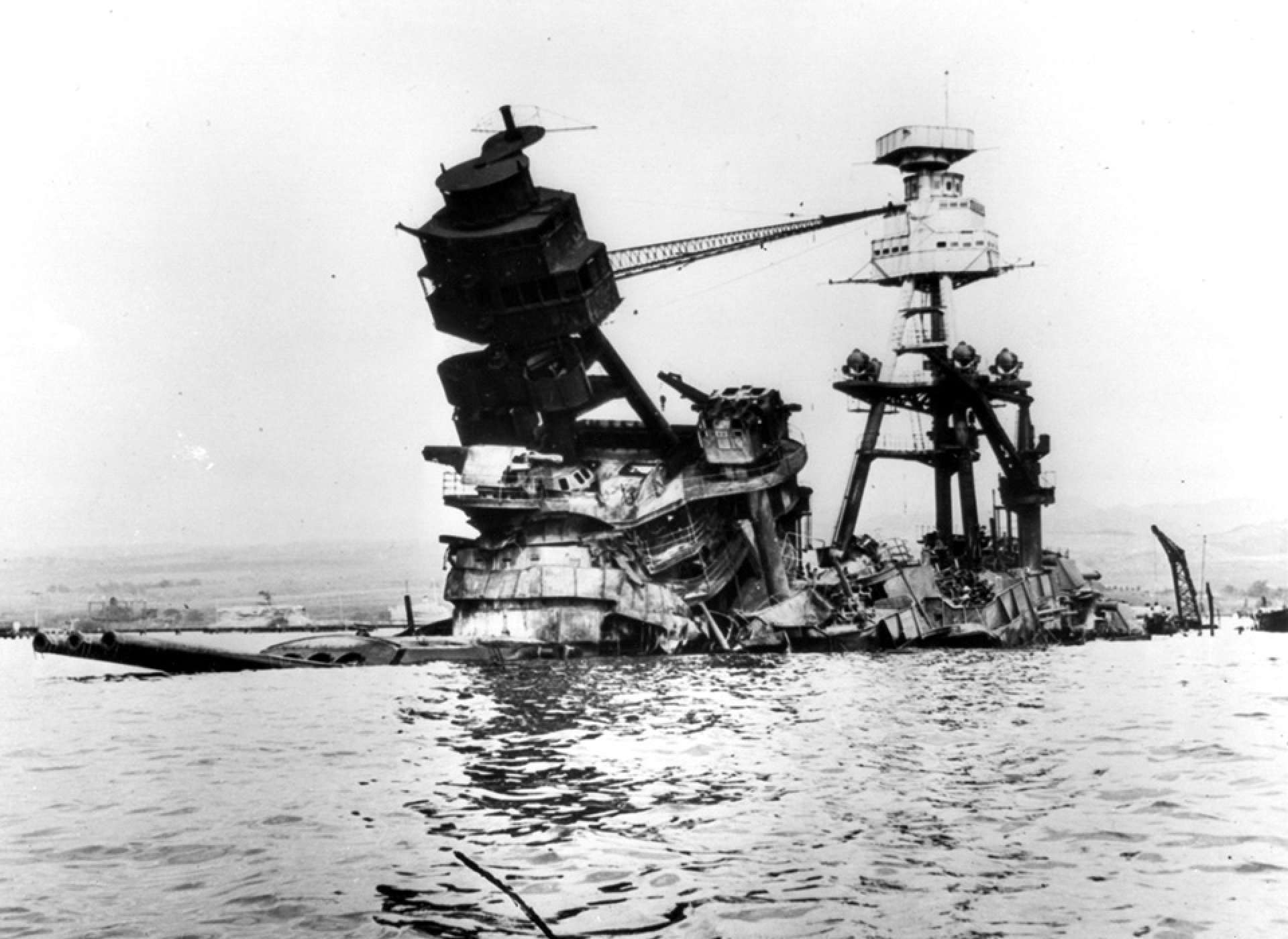
The wreck of the USS Arizona photographed after the December 7 attack. Turret one is fully submerged, with turret two at the waterline. Courtesy of the National Archives.
The Arizona’s forward deck sagged as the hull collapsed, sending its two fore turrets into the water. However, the guns mounted in a pair of turrets at the stern of the ship remained mostly unharmed and above the surface of the harbor.
As early as January 1942, the Navy informed the US Army’s Hawaiian Department that several guns and sets of support accessories from damaged battleships might be available for coastal defense. The Arizona’s two rear mounts, each equipped with a trio of 14-inch 45-caliber rifles, were all but guaranteed. A third turret, most likely the ship’s partly submerged turret number two, was possibly an option at a later date.
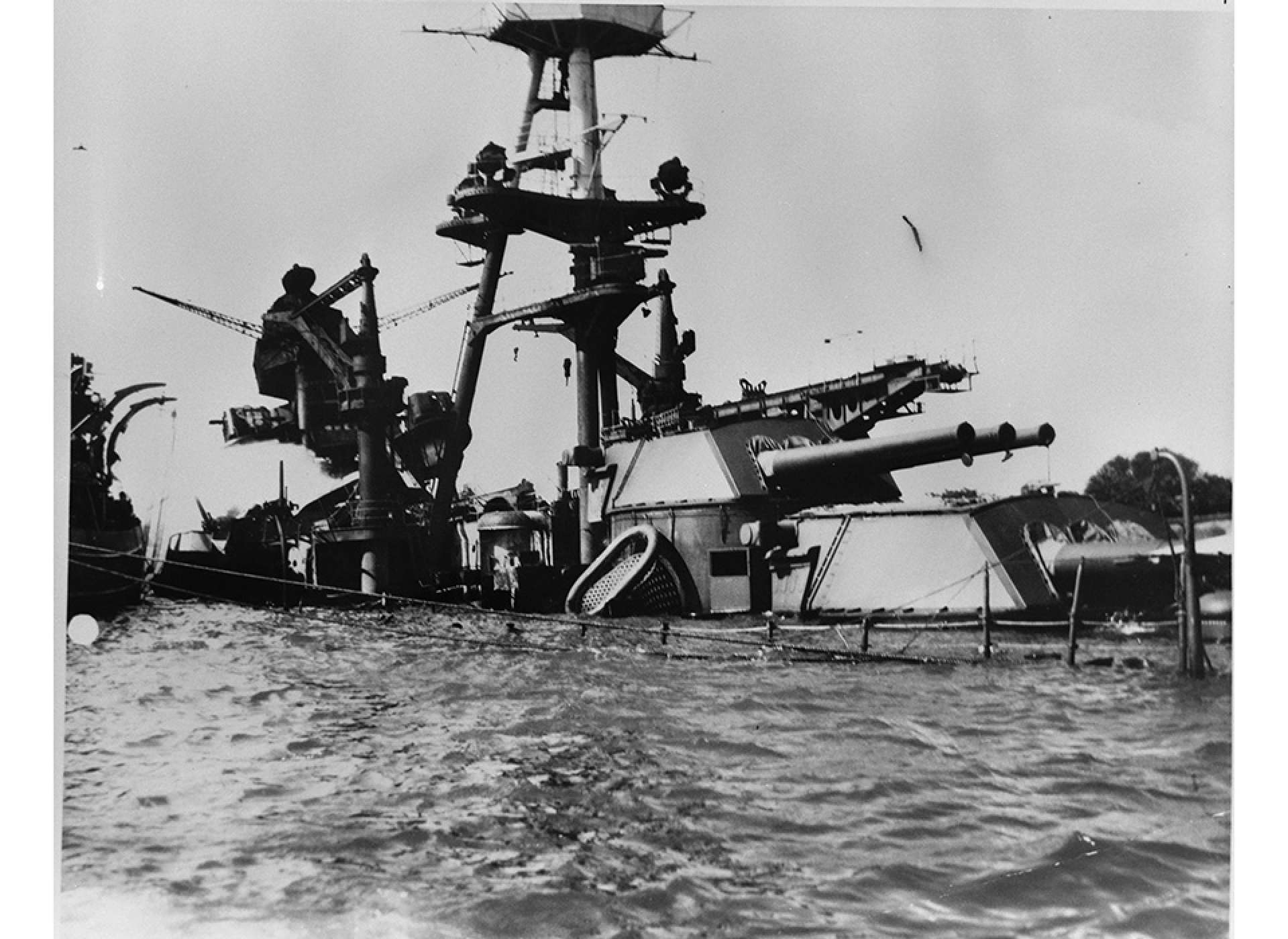
A view of the aft portion of the USS Arizona shows turrets three and four intact and above sea level. These were destined to be moved to fortifications on O’ahu. Courtesy of the National Archives.
The attack on Pearl Harbor changed the lives of nearly every American, and it was no different for the men of the Hawaiian Coast Artillery Command. Suddenly, Hawaii was at the front lines and truly at risk for enemy invasion. Previously lacking in manpower and equipment, the Army’s defense forces were all at once vital. The heavy guns were a welcome addition to the defense of the islands, assuming they could be quickly relocated.
Interestingly, the Arizona’s weaponry was not the only windfall for the Hawaiian Coast Artillery Command that anxious winter of 1941-1942. Three days after the Arizona offer, the Navy called the Artillery Command again, asking if they could find a use for 16 additional 8-inch guns. Considering that the Japanese navy seemed at America’s doorstep, how could they say no?
The reason for the availability of these guns also had its roots in Pearl Harbor. That devastating aerial attack proved to the last of the Navy naysayers that aircraft were now a powerful offensive weapon that could obliterate a surface fleet. Aircraft carriers were now undeniably critical to the future of combat in the Pacific. Carriers like the USS Lexington (CV-2) and USS Saratoga (CV-3) needed gun mounts built to help them fight off attacking airplanes, not duke it out with other ships. This revelation made the 8-inch guns unnecessary.
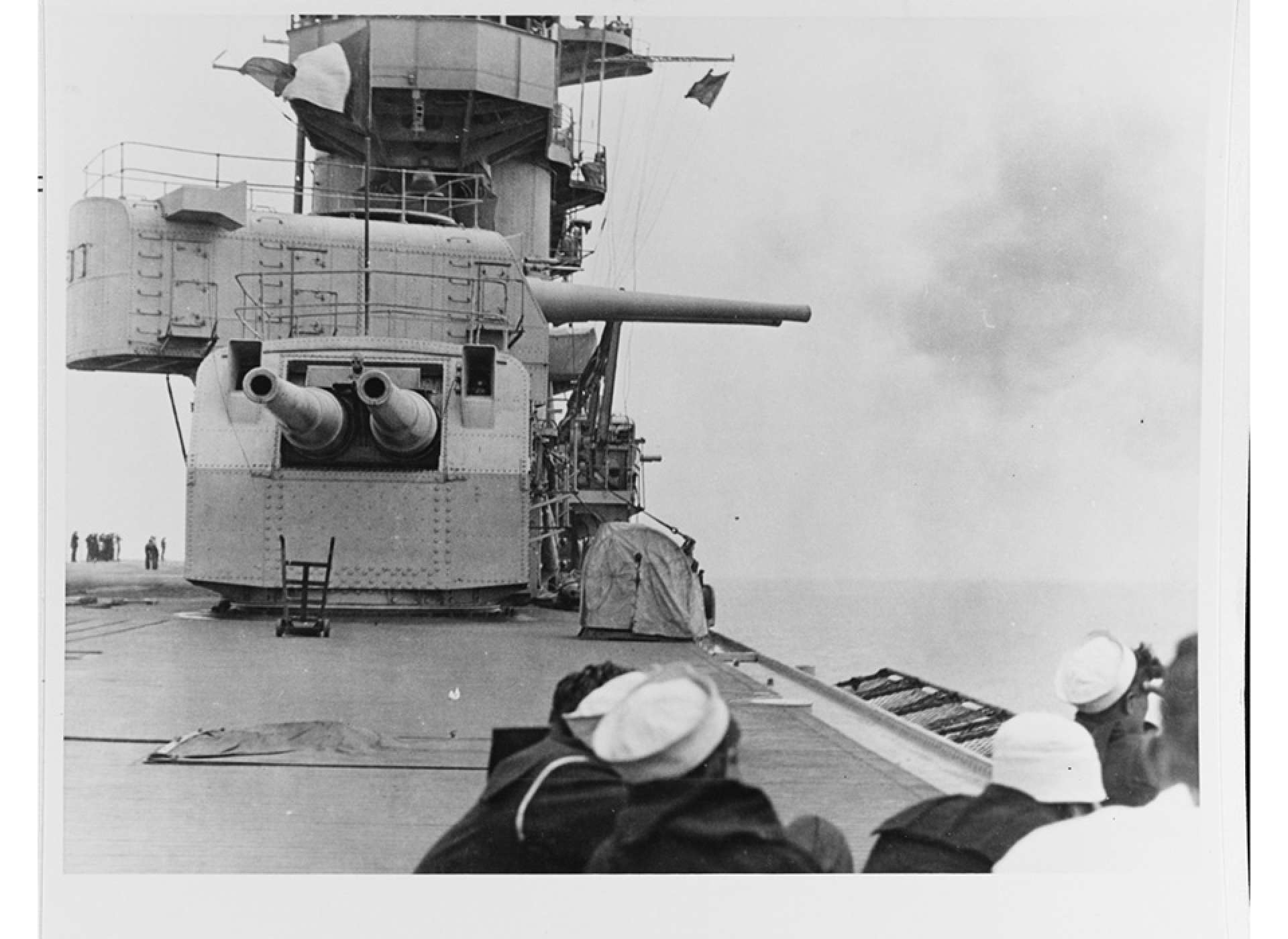
A view of the USS Lexington’s (CV-2) 8-inch gun turrets, seen in the 1920s. They later became part of Hawaii’s coastal defense network. Courtesy of the National Archives.
In Hawaii, the carriers’ big cannons came off, destined for four sites on O’ahu—overlooking Waimea Bay, Maunalua Bay, and Keˈehi Lagoon. The Saratoga received replacement 5-inch antiaircraft mounts. The Lexington was lost at Coral Sea before new guns could be installed.
Meanwhile, considerable effort went into moving the Arizona’s massive guns and turrets to locations with commanding views of the sea approaches to O’ahu. The triple-gunned turret named “Battery Arizona” would sit on a rocky outcrop at Kahe Point, some 300 feet above the ocean on the island’s leeward coast. The other Arizona turret, named “Battery Pennsylvania,” would be at Mokapu Point, at roughly the same elevation on the windward side. Pennsylvania would protect Kaneohe Bay and its naval air station while Arizona was set up to cover the island’s south and west sides, including Pearl Harbor, the main airport and seaports, and Honolulu.
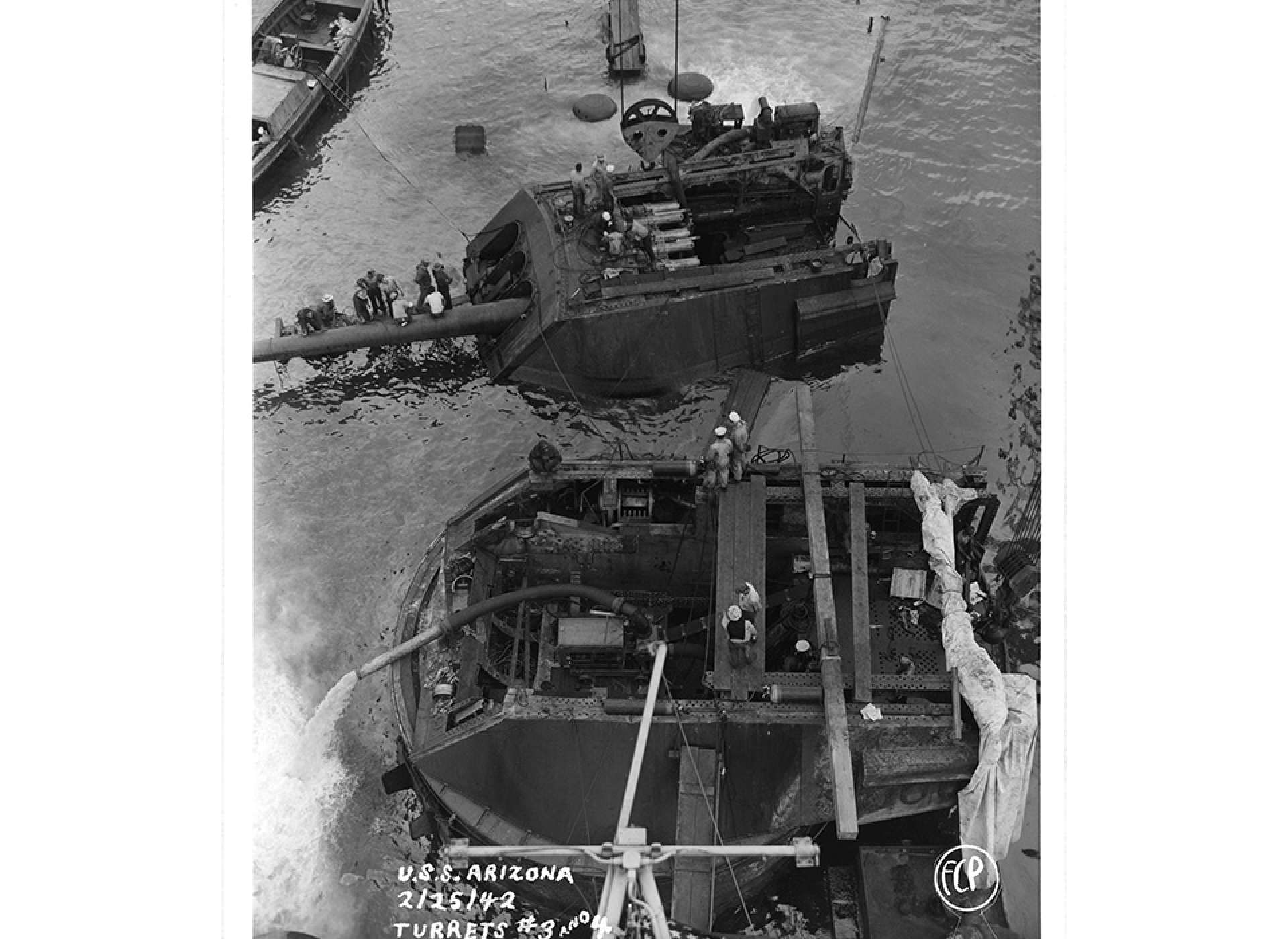
In February of 1942, crews work to extract the USS Arizona’s aft turrets during salvage operations. Courtesy of the National Archives.
The task at hand was much bigger than lugging the guns up a mountainside. To function properly, each firing position required a web of underground tunnels and rooms excavated from lava rock. They also consisted of massive concrete barbette, a multitude of support buildings, sighting stations, access roads, a command center, radar towers, and complete accommodation for roughly 160 men.
It is no surprise, as the tense months gave way to long years and the United States slowly wrestled back the Pacific from the Japanese, the work on Hawaii’s defensive positions slowed, but never fully stopped. In the interim at Pearl Harbor, another set of guns were extracted from the wreck of the Arizona’s half-submerged turret number two and sent to a shipyard in New York for relining, ready to be installed in another vessel.
The ship that received the Arizona’s trio of guns was the USS Nevada (BB-36). A veteran of Pearl Harbor, Nevada was also a part of the fighting near Attu, Atlantic convoy runs, the bombardment of Normandy on D-Day, and fire support for Operation Dragoon. After all of that action across the globe, it is no wonder the battleship required new gun barrels.
Shipyard crews installed the Arizona’s guns from turret number two into Nevada’s turret number one position in the fall of 1944. Soon after, the Nevada was back at sea, poised to pummel Iwo Jima and then Okinawa in 1945.
These battleship barrages, however, were not the last ones of the war. Allied battleships and cruisers boldly prowled Japan’s eastern coast in July and August of 1945, bombarding factories and cities. The Nevada was among them, but did not fire its main guns.
The last shot came elsewhere.
In the Territory of Hawaii, now decidedly behind the front lines, construction on Battery Arizona halted before it was finished on August 1, 1945. Across O’ahu, Battery Pennsylvania was further along and nearing completion. In a single test firing exercise, the sea near Mokapu Point reverberated with a boom. Navy sources vary widely on the exact date of the shots—ranging from August 10 to as late as September 2, 1945. What can be said with authority is, as the Empire of Japan was preparing to surrender in the last days of World War II, the USS Arizona’s triple guns thundered from a high ridge over the Pacific one final time.
Cite this article:
MLA Citation:
APA Citation:
Chicago Style Citation:
